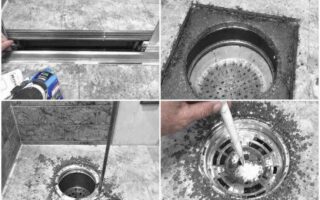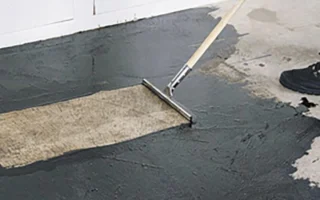Maintaining waxed floors can be tricky, but with the right knowledge and tools, you can keep them pristine. Understanding common issues is crucial for effective upkeep. Whether you tackle problems yourself or hire a professional, understanding your options will empower you to make informed decisions.
Regular maintenance and preventive measures extend the life of your waxed floors. Always remember that different surfaces may require unique care strategies. By staying vigilant and proactive about potential damages, you’ll enjoy beautiful floors for years.
Understanding the problem: Common issues with waxed floors

Waxed floors can suffer from various issues, often frustrating homeowners. One frequent problem is dullness, which occurs when the wax wears away or becomes discolored over time. This lackluster finish diminishes the beauty of your flooring.
Scuff marks are another common issue. These unsightly blemishes can come from shoes, furniture, or pets roaming the house. They detract from the polished look you desire.
Sticky residue might be one of the most annoying problems associated with waxed floors. Often caused by using too much cleaning product or improper waxing techniques, it leaves an unpleasant film that’s difficult to clean.
Water damage also poses a substantial threat to waxed surfaces. Spills and moisture can seep into cracks, causing warping and loss of integrity in your beautiful floorboards.
Step-by-step guide on how to fix waxed floors
Start by assessing the condition of your waxed floor. Look for scuffs, dullness, or uneven patches that need attention.
Next, gather your materials. You’ll need a mop, bucket, wax stripper, and fresh wax suitable for your floor type.
Begin by cleaning. Use a damp mop to remove dirt and debris, ensuring you work on a clean surface.
Apply the wax stripper according to the manufacturer’s instructions. Let it sit for the recommended time before scrubbing gently with a soft pad.
Rinse thoroughly to remove any residue from the stripper. It is important to allow the floor to dry completely before moving on.
Once dry, apply an even coat of new wax using a clean applicator or mop. The better the coverage and control, the smaller the sections should be.
Materials and tools needed for the job

Having the right materials and tools makes all the difference when fixing waxed floors. Start with a good-quality floor stripper. This will help remove old wax layers effectively.
You’ll also need a mop or soft cloth to apply the solutions without damaging the surface. A bucket is essential for mixing your cleaning agents or water solution.
If you have access to one, a floor buffer can bring back that glossy finish after waxing. A scrub brush might be necessary for stubborn spots.
Protective gear like gloves is crucial, too. Waxing products can be harsh on your skin, so safety first!
Stock up on fresh wax suitable for your flooring type. The right product ensures long-lasting shine and protection from future wear and tear.
Tips for preventing future waxing problems
Maintaining waxed floors requires attention to detail. Start by cleaning regularly with a soft mop or cloth. Avoid using harsh chemicals, as they can strip the wax finish.
Limit foot traffic during peak hours, especially in high-traffic areas. Consider placing mats at entryways to reduce dirt and moisture that can damage the surface.
Use furniture pads under the legs of tables and chairs to prevent scratches. These small adjustments can go a long way in preserving your floor’s appearance.
When reapplying wax, ensure you’re working on a clean surface. Dust and debris will only create uneven spots in your new coat.
Avoid excessive water when mopping. Too much moisture can warp or lift the wax layer over time. Keep it damp instead of soaking wet for best results.
Hiring a Professional vs. DIY approach
When it comes to fixing waxed floors, it can be tricky to decide between hiring a professional and tackling the job yourself.
A professional with experience can handle various issues like scratches or discoloration. They usually come equipped with specialized tools that make the job quicker and more efficient. Plus, their expertise means less risk of damage.
Conversely, a DIY approach can save money if you’re on a budget. It allows for a personal touch and gives you complete control over the process. Many people find satisfaction in completing home projects themselves.
Keep in mind that without proper knowledge, you might make mistakes that lead to higher costs down the line. Weighing your skills against potential pitfalls is essential before deciding which route to take for restoring your waxed floors.
Alternative solutions for damaged waxed floors
If your waxed floors are beyond simple repair, consider alternative solutions to rejuvenate their appearance. One option is to use a floor polish specifically designed for waxed surfaces. This can enhance shine and provide a protective layer without stripping the wax.
Another approach is to refinish the floors entirely. Sanding down the surface removes damaged layers, allowing you to start fresh with new wax or finish. This method restores both aesthetics and durability.
For those seeking low-maintenance options, transitioning to vinyl or laminate flooring might be ideal. These materials offer various designs while requiring less upkeep than traditional waxing methods.
Decorative rugs can effectively cover imperfections in damaged areas while adding style and comfort to your space. These alternatives are viable paths toward restoring beauty in your home without strictly adhering to traditional waxing practices.




